Abstract
A recent study reported procedures (the “good behavior game”) for reducing disruptive classroom behavior. Replication of the procedures of the “good behavior game” in two classrooms showed it to be an effective technique for reducing disruptive talking and out-of-seat behavior. Further experimental analysis indicated that the effective components of the game were division of the class into teams, consequences for a team winning the game, and criteria set for winning the game. Although disruptive behavior was markedly reduced by the game, the reductions were correlated with only slightly improved accuracy of academic performance in the one classroom where academic performance was measured.
Full text
PDF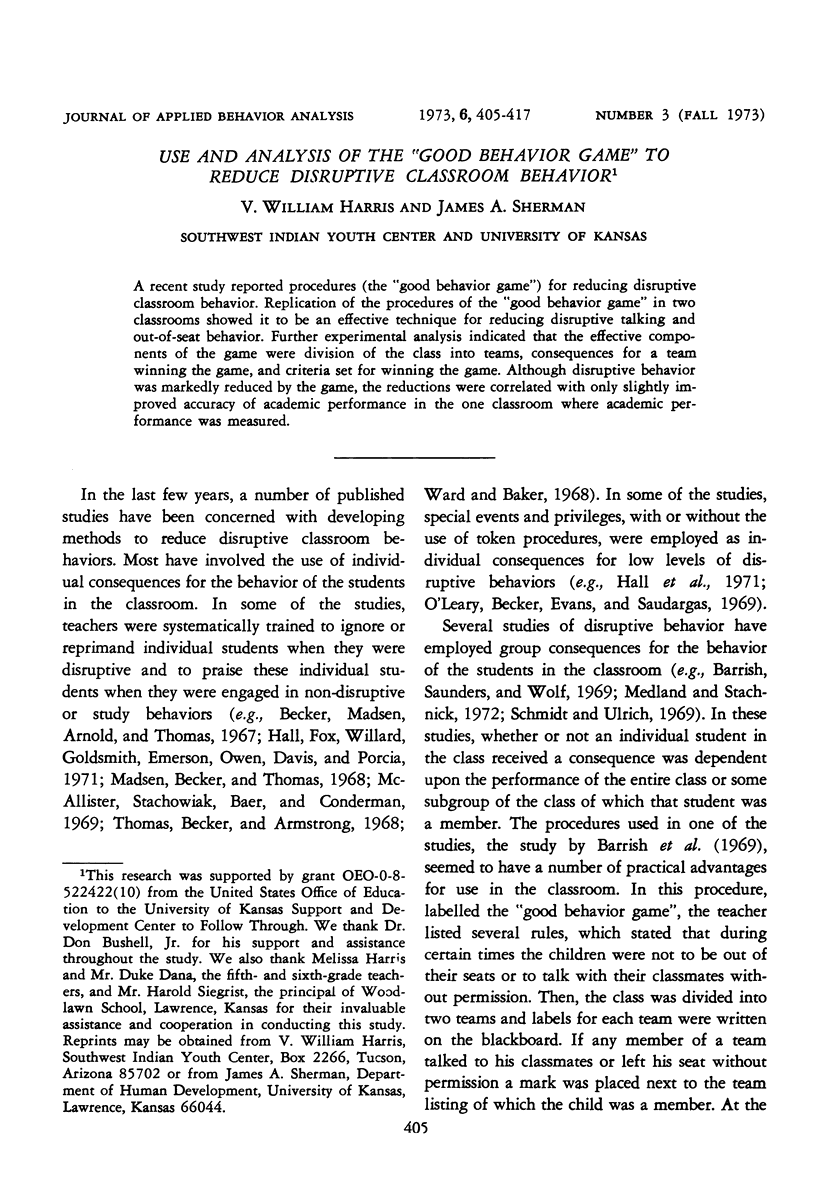
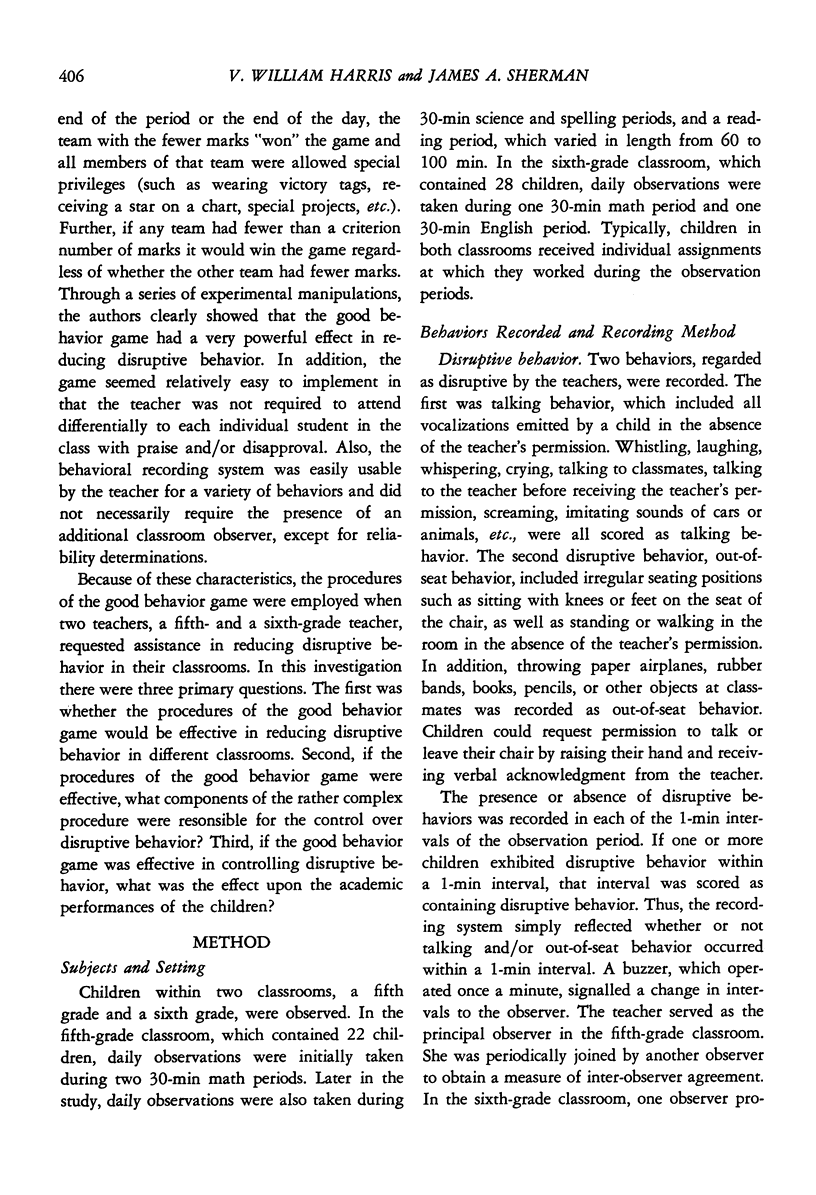
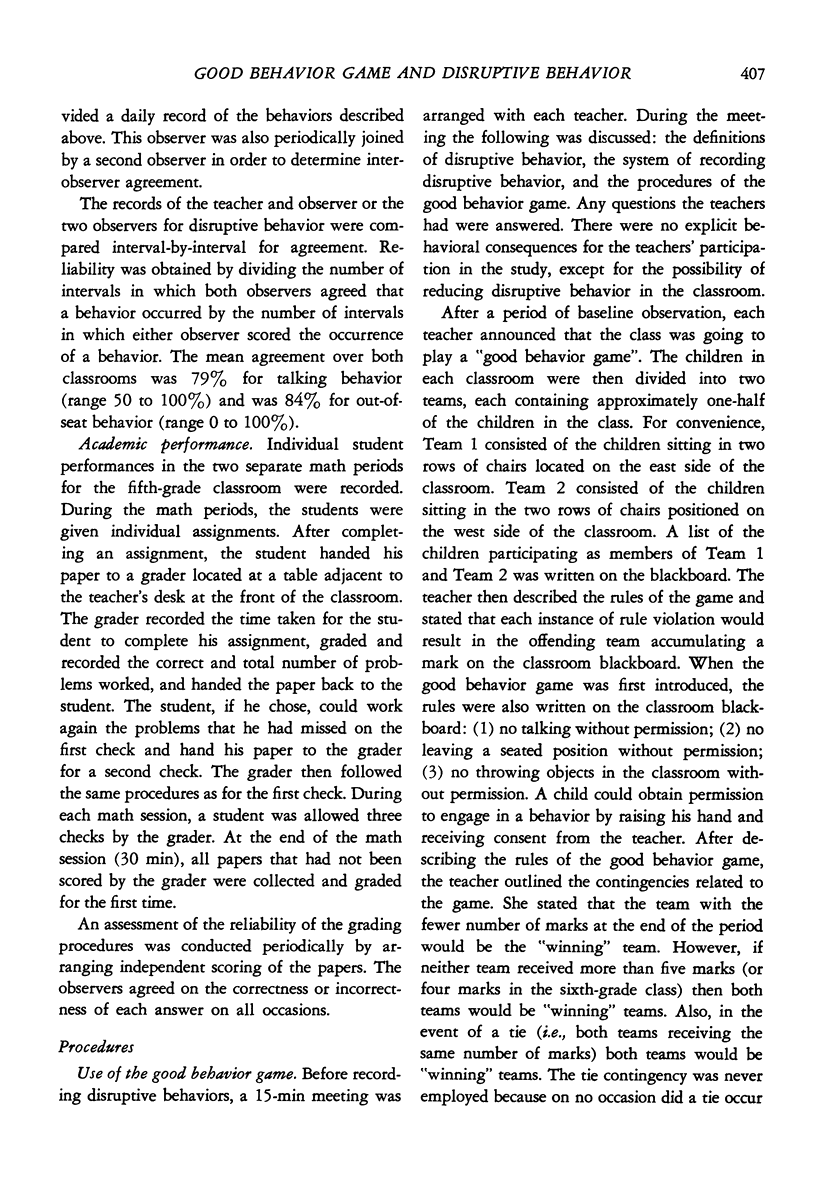
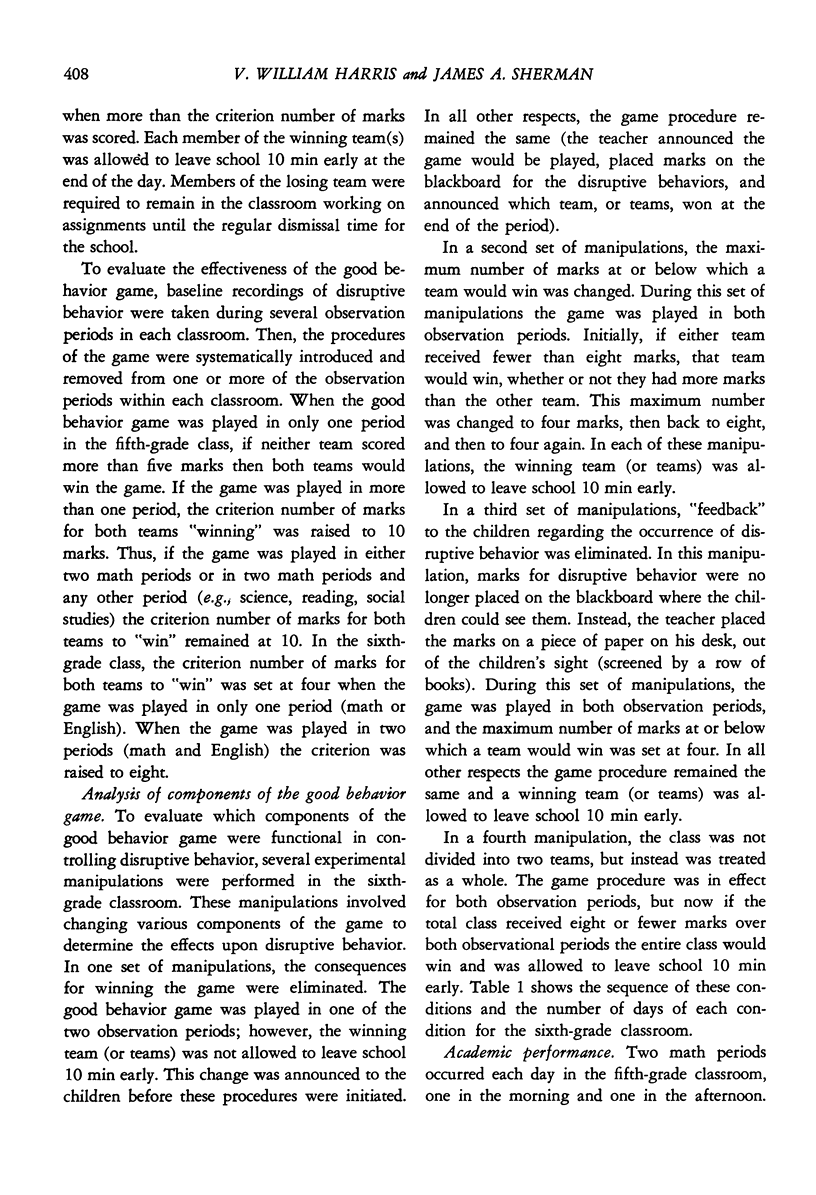
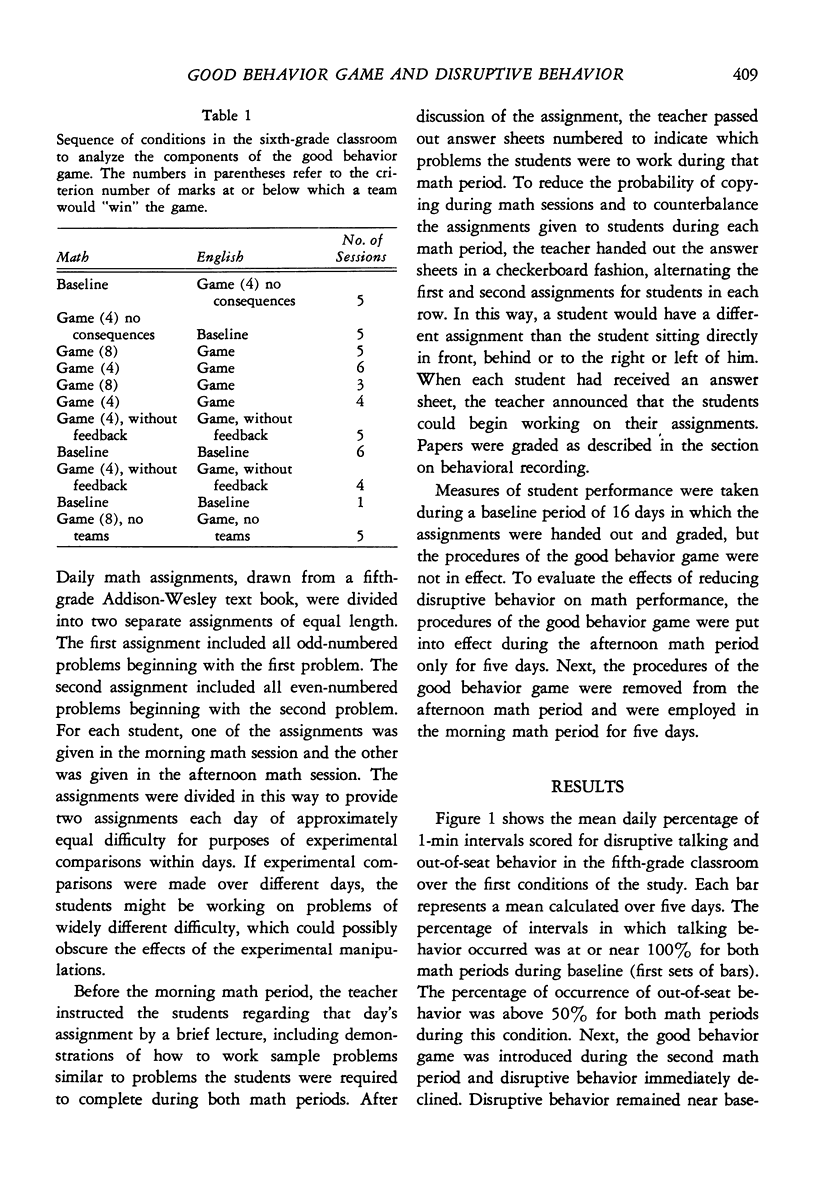
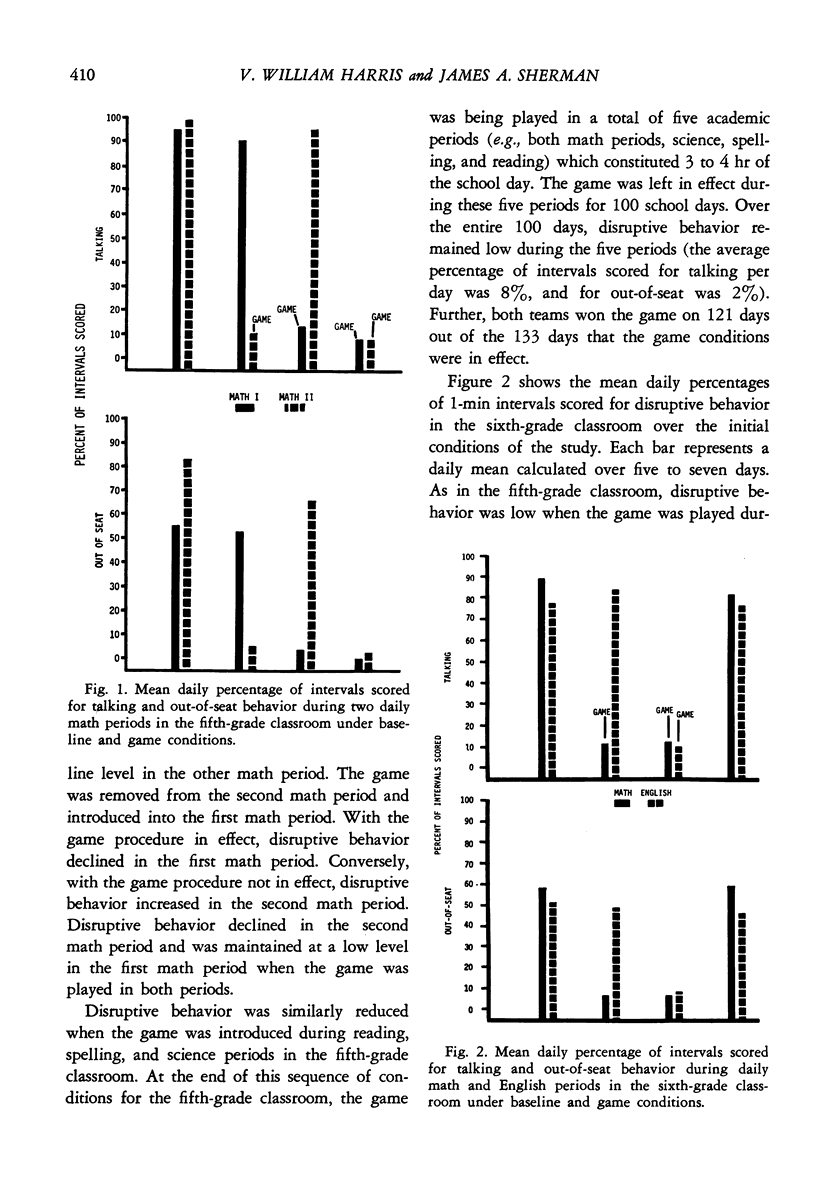

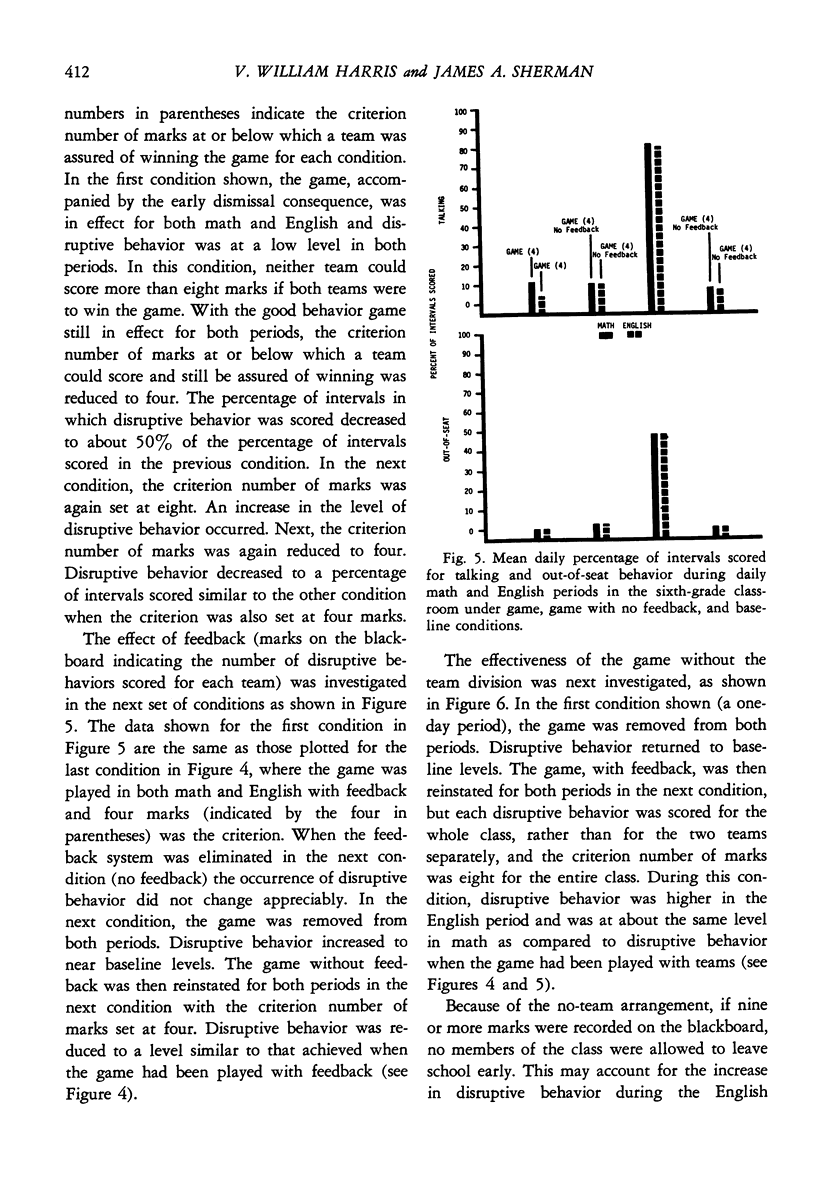
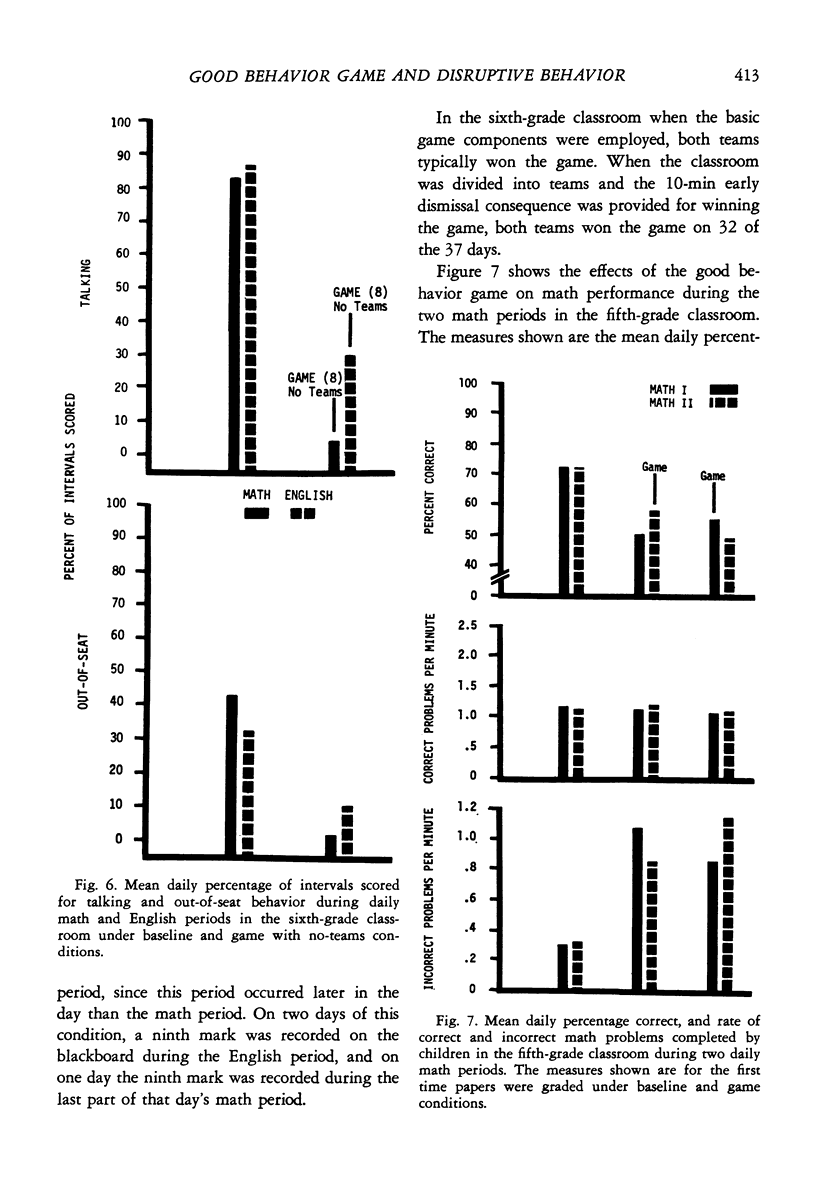
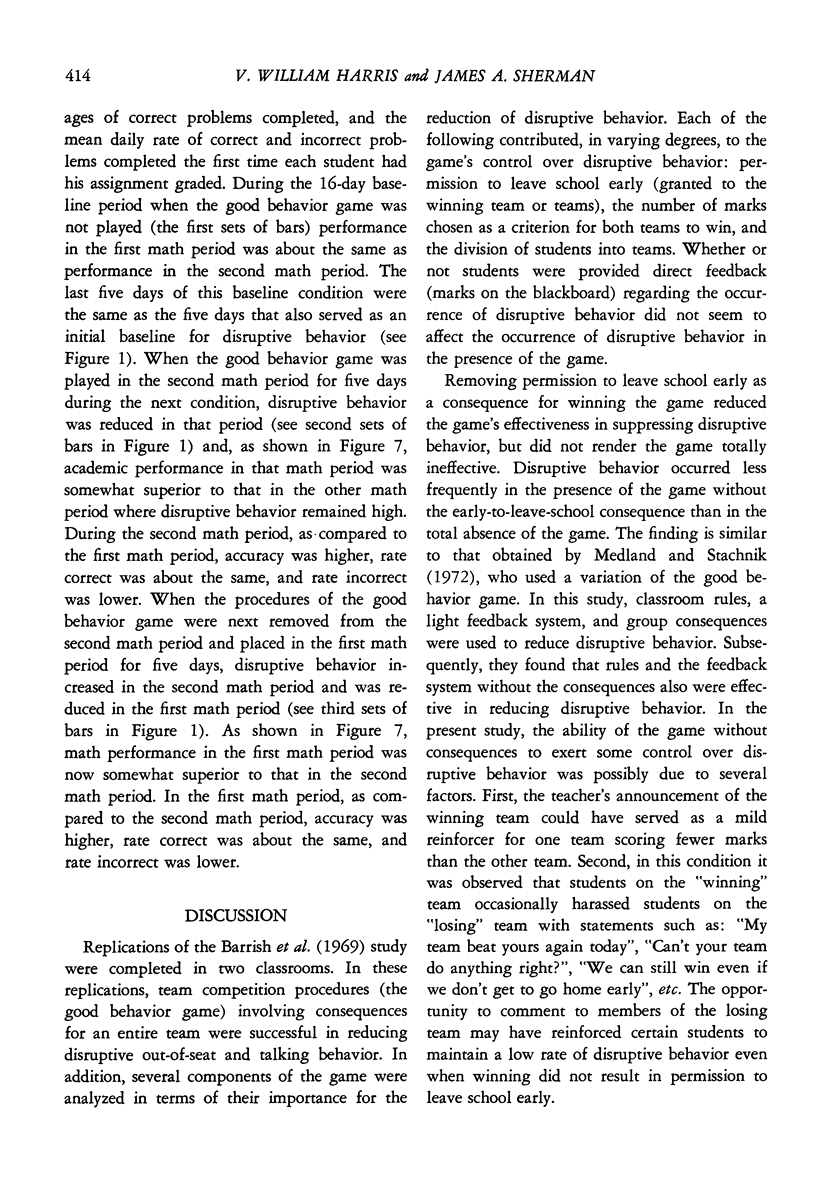
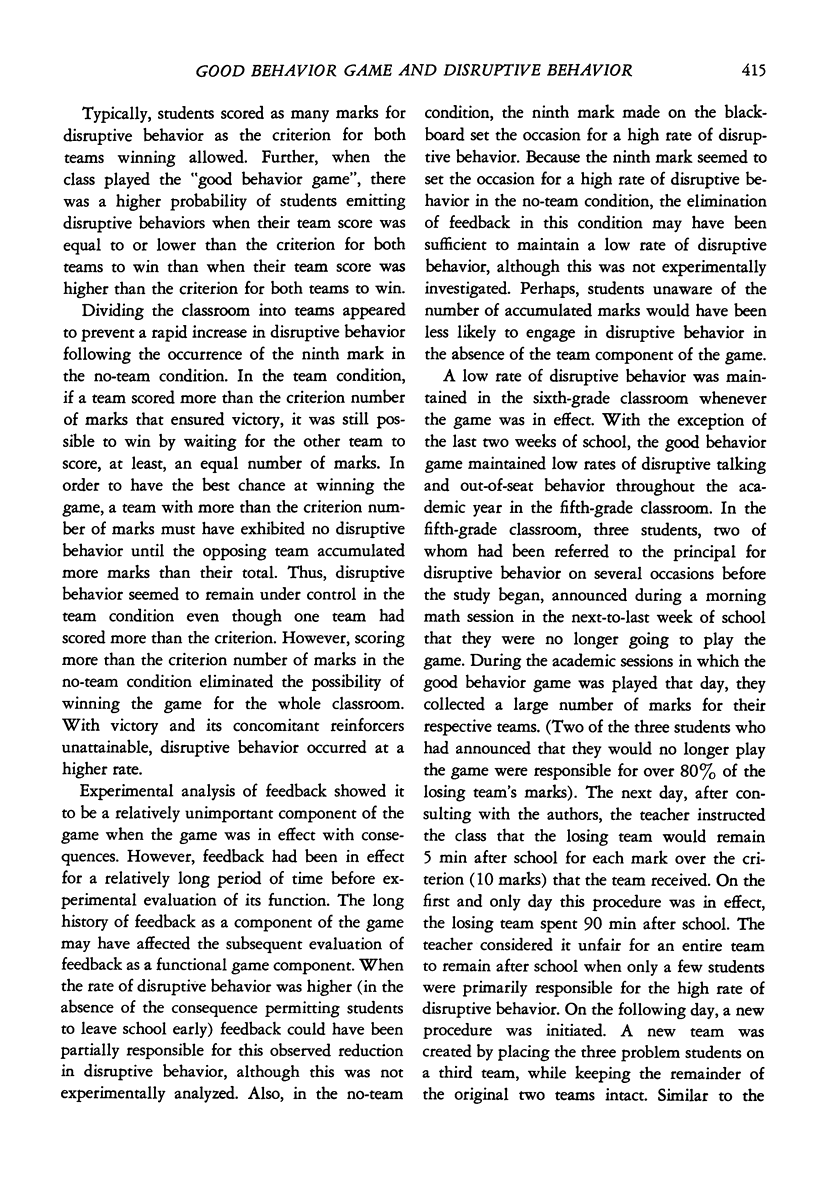
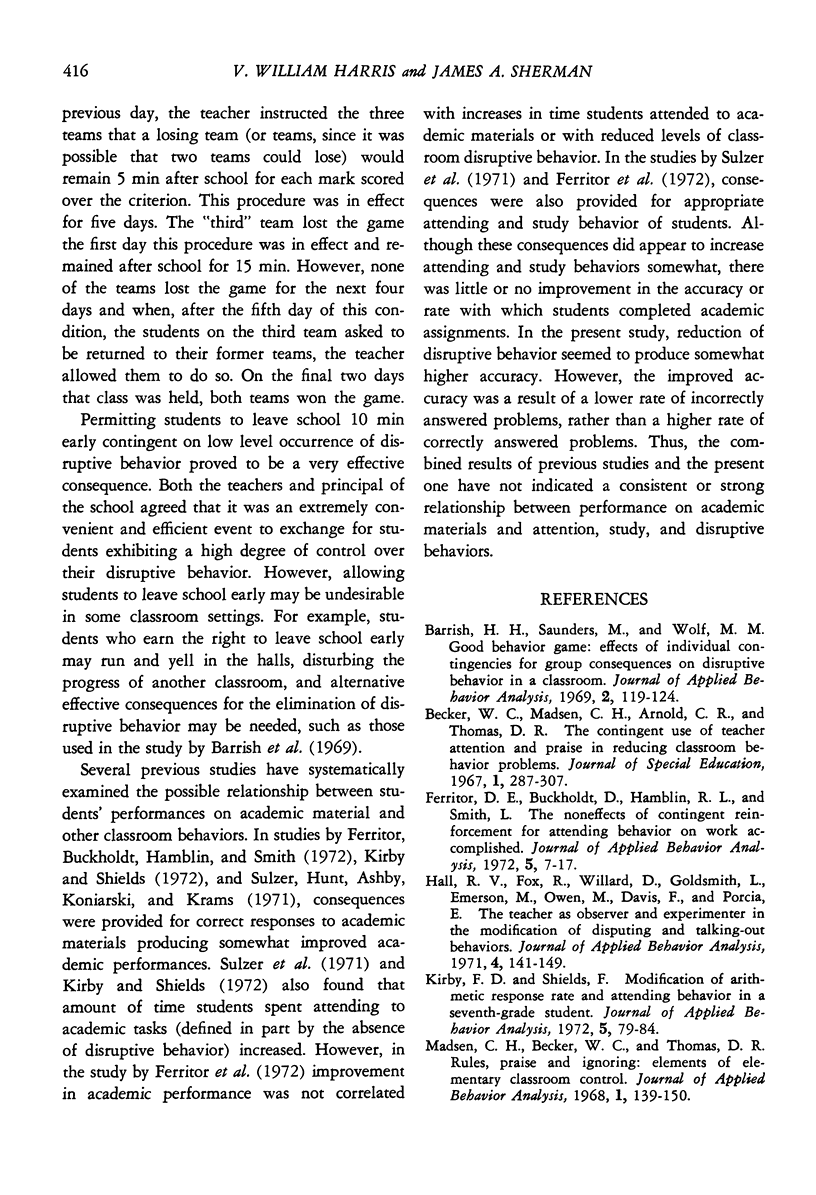
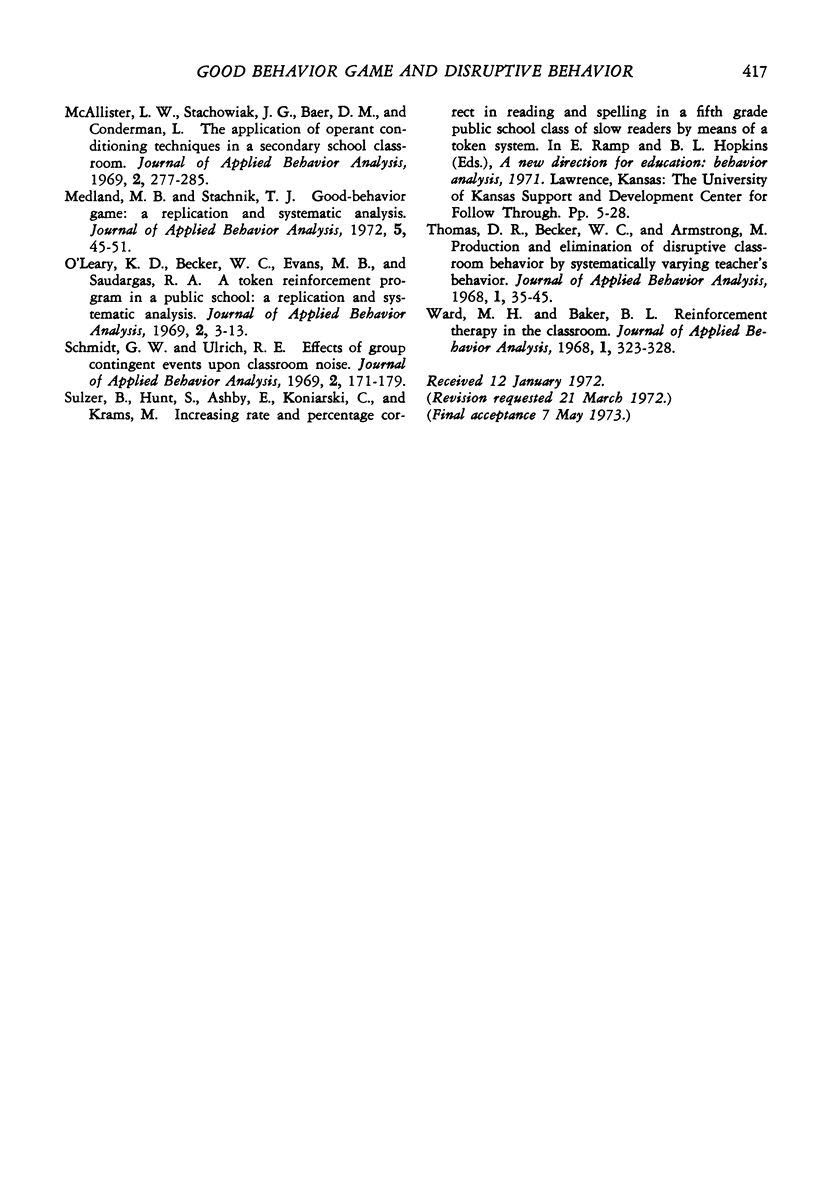
Selected References
These references are in PubMed. This may not be the complete list of references from this article.
- Barrish H. H., Saunders M., Wolf M. M. Good behavior game: effects of individual contingencies for group consequences on disruptive behavior in a classroom. J Appl Behav Anal. 1969 Summer;2(2):119–124. doi: 10.1901/jaba.1969.2-119. [DOI] [PMC free article] [PubMed] [Google Scholar]
- Ferritor D. E., Buckholdt D., Hamblin R. L., Smith L. The noneffects of contingent reinforcement for attending behavior on work accomplished. J Appl Behav Anal. 1972 Spring;5(1):7–17. doi: 10.1901/jaba.1972.5-7. [DOI] [PMC free article] [PubMed] [Google Scholar]
- Hall R. V., Fox R., Willard D., Goldsmith L., Emerson M., Owen M., Davis F., Porcia E. The teacher as observer and experimenter in the modification of disputing and talking-out behaviors. J Appl Behav Anal. 1971 Summer;4(2):141–149. doi: 10.1901/jaba.1971.4-141. [DOI] [PMC free article] [PubMed] [Google Scholar]
- Kirby F. D., Shields F. Modification of arithmetic response rate and attending behavior in a seventh-grade student. J Appl Behav Anal. 1972 Spring;5(1):79–84. doi: 10.1901/jaba.1972.5-79. [DOI] [PMC free article] [PubMed] [Google Scholar]
- Madsen C. H., Becker W. C., Thomas D. R. Rules, praise, and ignoring: elements of elementary classroom control. J Appl Behav Anal. 1968 Summer;1(2):139–150. doi: 10.1901/jaba.1968.1-139. [DOI] [PMC free article] [PubMed] [Google Scholar]
- McAllister L. W., Stachowiak J. G., Baer D. M., Conderman L. The application of operant conditioning techniques in a secondary school classroom. J Appl Behav Anal. 1969 Winter;2(4):277–285. doi: 10.1901/jaba.1969.2-277. [DOI] [PMC free article] [PubMed] [Google Scholar]
- Medland M. B., Stachnik T. J. Good-behavior game: a replication and systematic analysis. J Appl Behav Anal. 1972 Spring;5(1):45–51. doi: 10.1901/jaba.1972.5-45. [DOI] [PMC free article] [PubMed] [Google Scholar]
- O'leary K. D., Becker W. C., Evans M. B., Saudargas R. A. A token reinforcement program in a public school: a replication and systematic analysis. J Appl Behav Anal. 1969 Spring;2(1):3–13. doi: 10.1901/jaba.1969.2-3. [DOI] [PMC free article] [PubMed] [Google Scholar]
- Schmidt G. W., Ulrich R. E. Effects of group contingent events upon classroom noise. J Appl Behav Anal. 1969 Fall;2(3):171–179. doi: 10.1901/jaba.1969.2-171. [DOI] [PMC free article] [PubMed] [Google Scholar]
- Thomas D. R., Becker W. C., Armstrong M. Production and elimination of disruptive classroom behavior by systematically varying teacher's behavior. J Appl Behav Anal. 1968 Spring;1(1):35–45. doi: 10.1901/jaba.1968.1-35. [DOI] [PMC free article] [PubMed] [Google Scholar]
- Ward M. H., Baker B. L. Reinforcement therapy in the classroom. J Appl Behav Anal. 1968 Winter;1(4):323–328. doi: 10.1901/jaba.1968.1-323. [DOI] [PMC free article] [PubMed] [Google Scholar]


